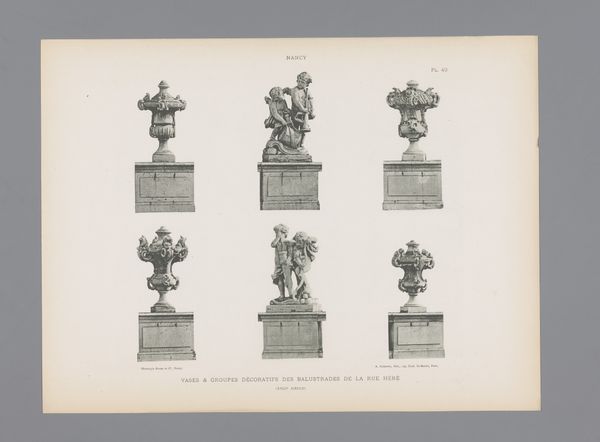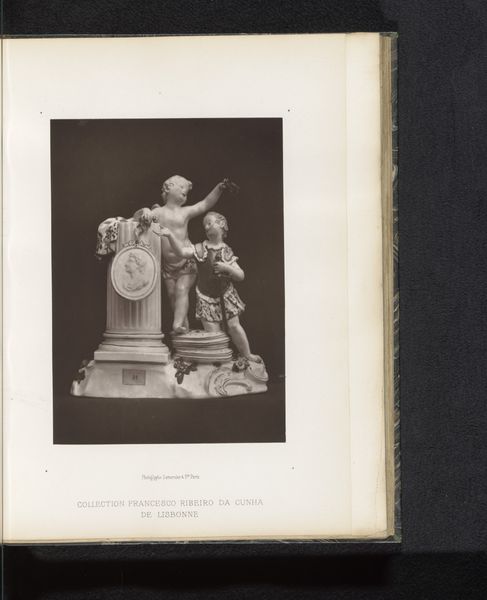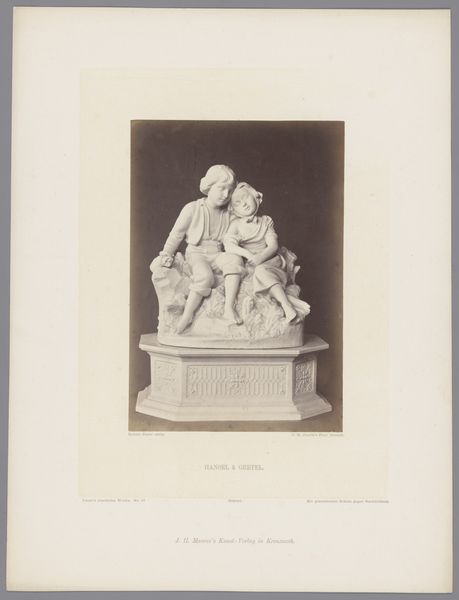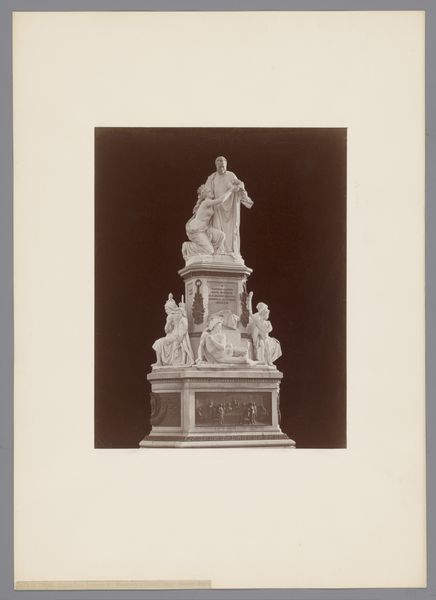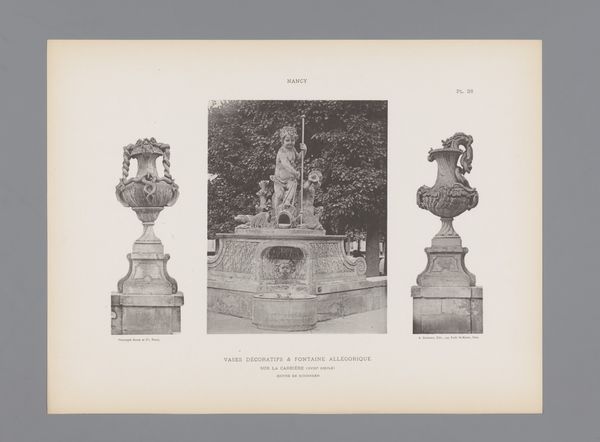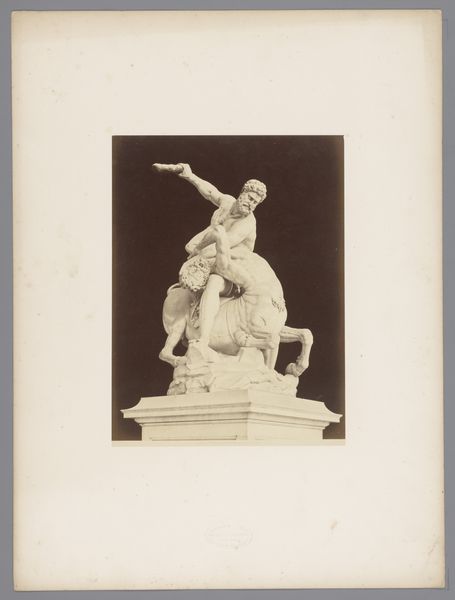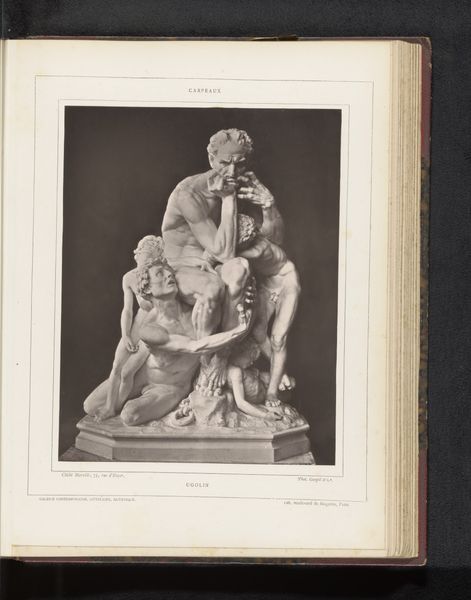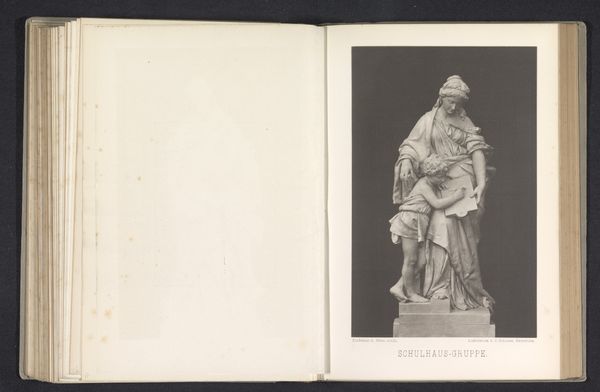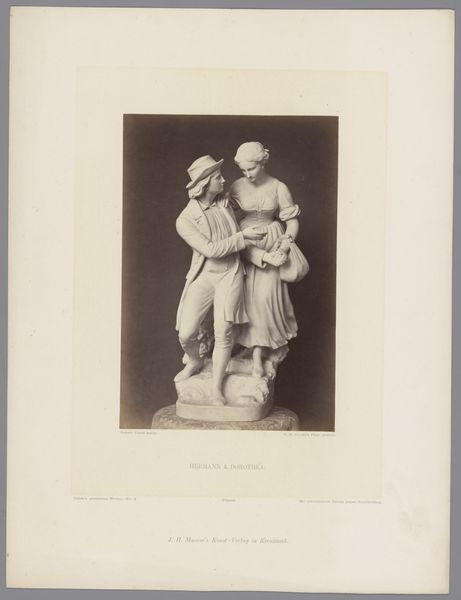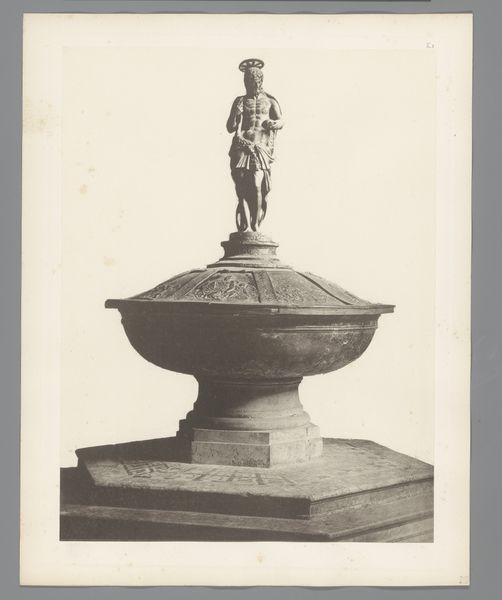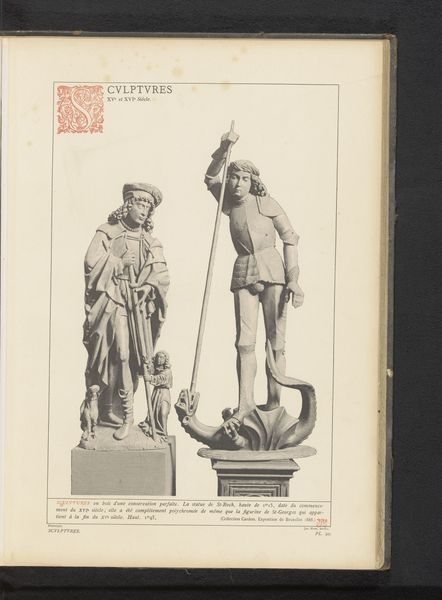
print, photography, sculpture
# print
#
figuration
#
photography
#
sculpture
#
cityscape
#
academic-art
#
realism
Dimensions: height 401 mm, width 298 mm
Copyright: Rijks Museum: Open Domain
Curator: Before us we have a photographic print entitled "Vier opnames van standbeelden op Place de la Carrière te Nancy," taken before 1896 by an anonymous photographer. It depicts, as the title suggests, four sculptural groupings found in the Place de la Carrière in Nancy. My immediate sense, before delving deeper, is a kind of antiquated innocence, wouldn't you agree? They seem suspended in time. Editor: Antiquated innocence... that's a delicate way to put it. I see more of an idealized vision of childhood and civic virtue typical of the late 19th century. Note the way the sculptures—likely stone, given the print’s inscription—are carefully positioned within a constructed public space, Place de la Carrière. They act as symbols of power, designed to reinforce specific social and political values. The sculptures romanticize children playing. Curator: I suppose I see that, yes. These aren’t exactly gritty depictions of street urchins, are they? Though the poses strike me as theatrical, almost staged, capturing the kind of fleeting drama children create in their play. They definitely don’t come across like casual snapshots; they seem to express some sort of allegorical virtue or... civic ideal, I see it now! It really highlights a certain societal hope of the time. Editor: Precisely! The sculptures embody the ideals of bourgeois society at the time—domesticity, order, patriotism—packaged for public consumption. Notice how they’re presented as unified groupings, reinforcing notions of harmony and collective identity? These weren’t just playful statues, they were visual propaganda reinforcing a social order. Curator: It’s amazing how much historical context we can uncover simply by taking a closer look, like unearthing something that has been purposefully buried under centuries of societal development and idealism. These little cherubs really do contain multitudes, huh? Editor: Indeed. And by interrogating the images, rather than simply accepting them, we start to peel back the layers of ideology inherent in their presentation. Hopefully sparking discussions about the power structures at play then—and potentially now—in public art. Curator: Agreed. Sometimes the most unassuming things hide such complex and important narratives! Thanks for broadening my perspective, as usual! Editor: And thank you for grounding me in the intuitive appreciation of form and feeling.
Comments
No comments
Be the first to comment and join the conversation on the ultimate creative platform.
